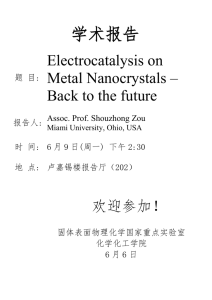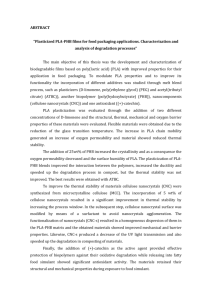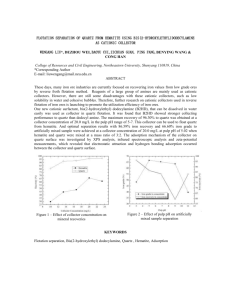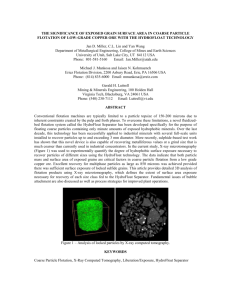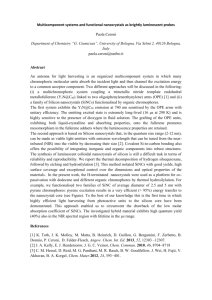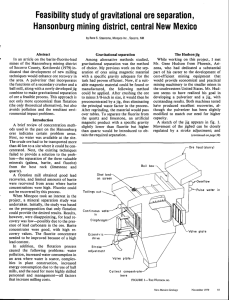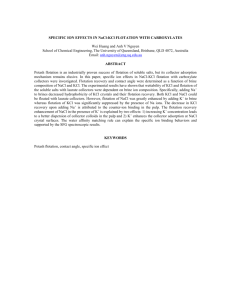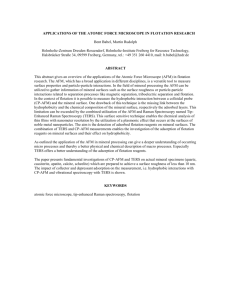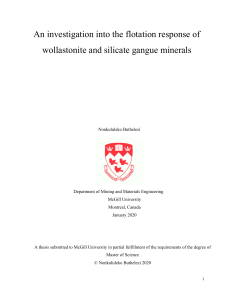instructions to authors for the preparation - The Gibson Group
advertisement
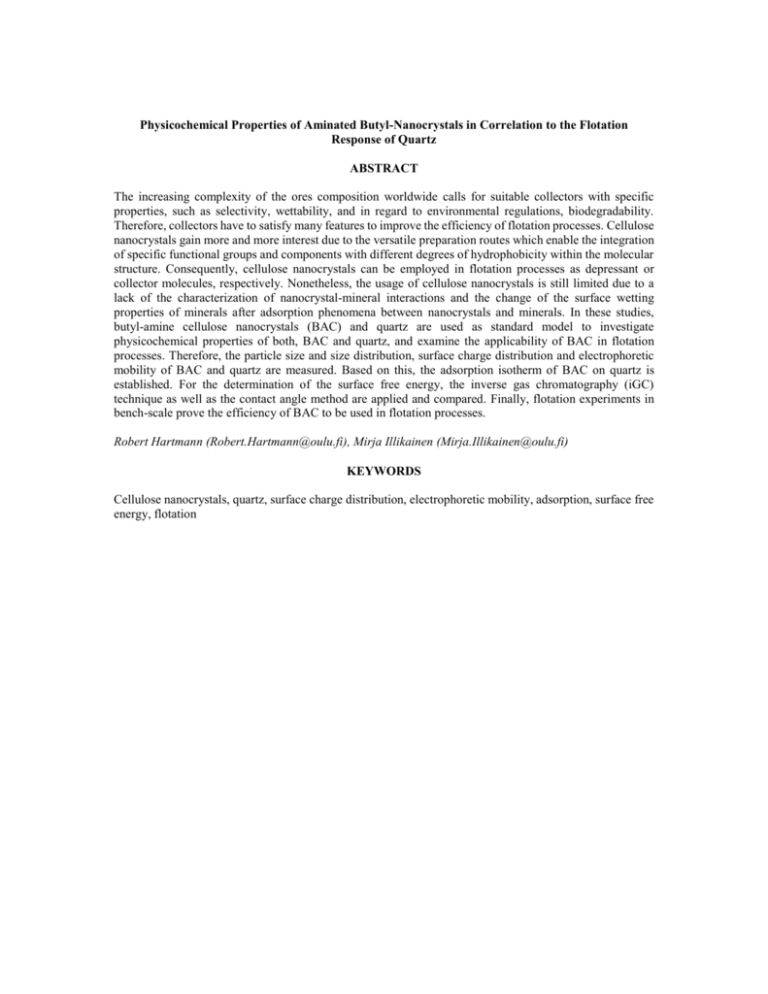
Physicochemical Properties of Aminated Butyl-Nanocrystals in Correlation to the Flotation Response of Quartz ABSTRACT The increasing complexity of the ores composition worldwide calls for suitable collectors with specific properties, such as selectivity, wettability, and in regard to environmental regulations, biodegradability. Therefore, collectors have to satisfy many features to improve the efficiency of flotation processes. Cellulose nanocrystals gain more and more interest due to the versatile preparation routes which enable the integration of specific functional groups and components with different degrees of hydrophobicity within the molecular structure. Consequently, cellulose nanocrystals can be employed in flotation processes as depressant or collector molecules, respectively. Nonetheless, the usage of cellulose nanocrystals is still limited due to a lack of the characterization of nanocrystal-mineral interactions and the change of the surface wetting properties of minerals after adsorption phenomena between nanocrystals and minerals. In these studies, butyl-amine cellulose nanocrystals (BAC) and quartz are used as standard model to investigate physicochemical properties of both, BAC and quartz, and examine the applicability of BAC in flotation processes. Therefore, the particle size and size distribution, surface charge distribution and electrophoretic mobility of BAC and quartz are measured. Based on this, the adsorption isotherm of BAC on quartz is established. For the determination of the surface free energy, the inverse gas chromatography (iGC) technique as well as the contact angle method are applied and compared. Finally, flotation experiments in bench-scale prove the efficiency of BAC to be used in flotation processes. Robert Hartmann (Robert.Hartmann@oulu.fi), Mirja Illikainen (Mirja.Illikainen@oulu.fi) KEYWORDS Cellulose nanocrystals, quartz, surface charge distribution, electrophoretic mobility, adsorption, surface free energy, flotation
